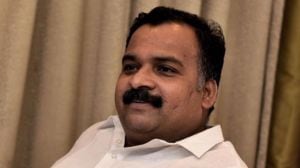Striking argument
Meeting airport union leaders was necessary politics for the prime minister. Since it seems that it helped cool tempers, it can be good poli...

Meeting airport union leaders was necessary politics for the prime minister. Since it seems that it helped cool tempers, it can be good policy, too. Because speed, always welcome in major reform, has an important dimension in this case. India hosts the 2010 Commonwealth Games. Delhi needs, in parts, an infrastructural makeover. But from hotel space to sporting venues to the city airport, everything is surreally unprepared for an event of this size and prestige the Mumbai airport, as another international hub, will also figure in planning the Games. There8217;s just about enough time for everything to be in place. That means there8217;s hardly any time for re-looks and reconsiderations. The Games argument, of course, has a broader dimension. Tourism is one sector that offers the easiest of reform-driven prizes, and world-class airports are a major part of the solution.
Airport unions and politicians supporting them have frequently pointed to the alternative to privatisation 8212; the AAI employees8217; revamp plan. Given what the unions were protesting about, it is useful to remember that even if the AAI employees8217; plan was accepted, foreign consultants, foreign managerial expertise, foreign technology, in short a substantial foreign presence, would still have been required. Otherwise a revamp would have been impossible. What arguments against privatisation boil down to therefore are, first, ownership and, second, jobs.
Taking jobs first, the PM has repeated an assurance already given and written into the privatisation agreement 8212; that lay-offs are not part of the change. As for ownership, major private airports are not only a current reality in India but even in the old days that many reform-pessimists refer to, airports were not considered a sole state preserve. The Aircraft Rules, first framed in 1937, explicitly allows non-government airports. That has never been changed. In fact, there need not be any dogma about airport ownership at all. A superbly run, technically and commercially savvy government managed airport need not be privatised. As it happens, there aren8217;t really any examples of this in the 90-odd airports the AAI runs. Only two of them have been privatised. AAI employees have a lot of airports to show that they can do a fantastic job. But, first, they must get back to work.
- 01
- 02
- 03
- 04
- 05































